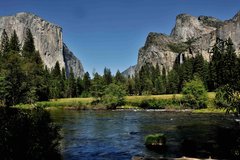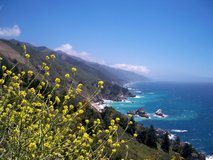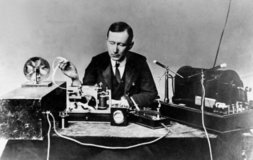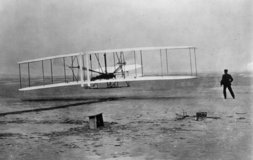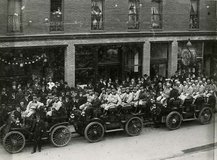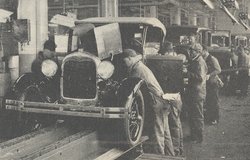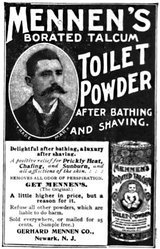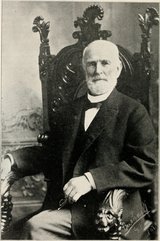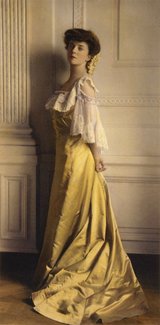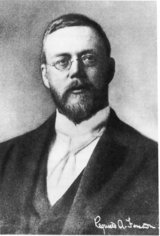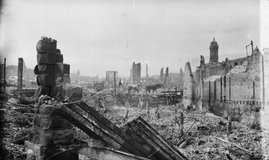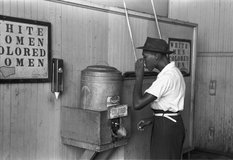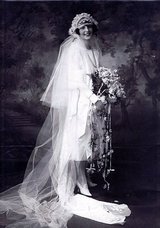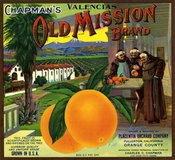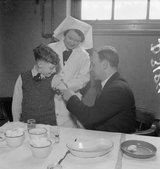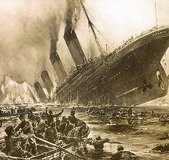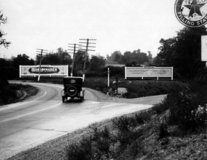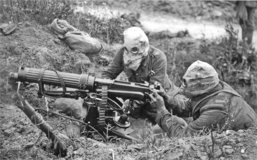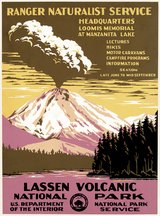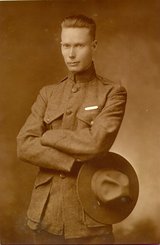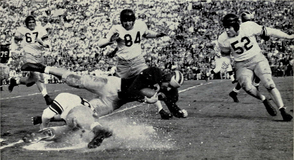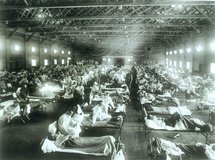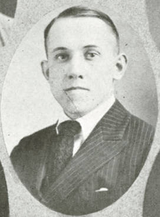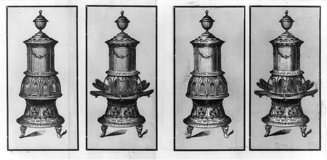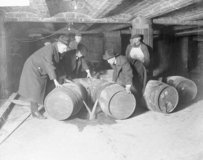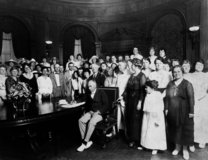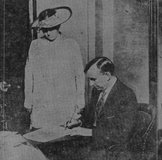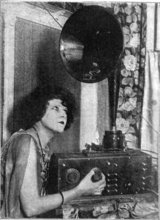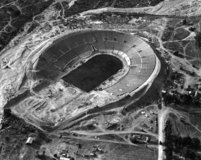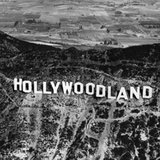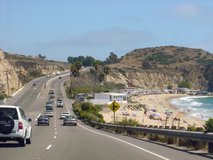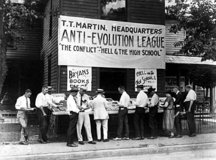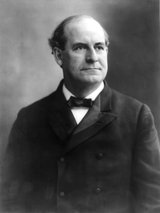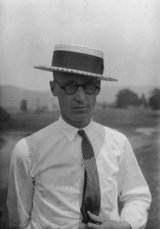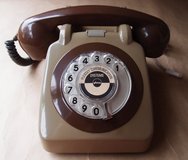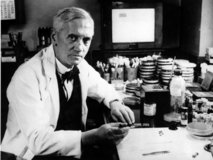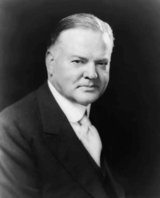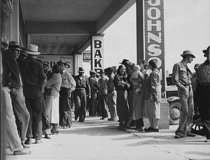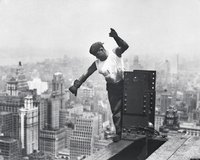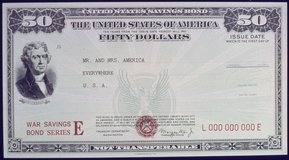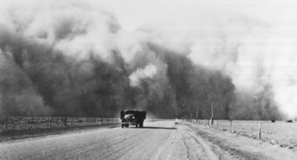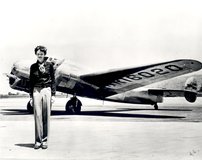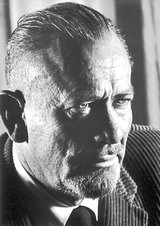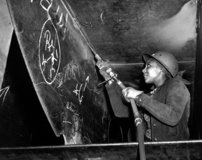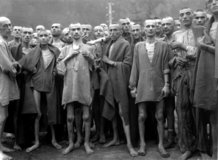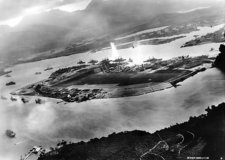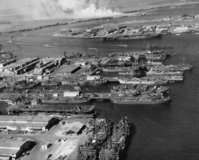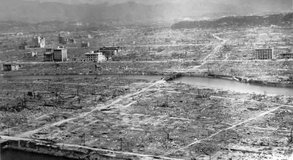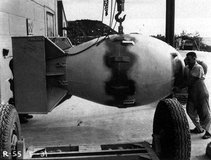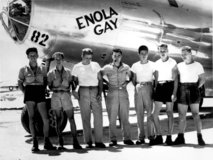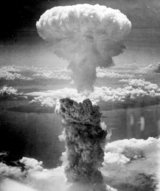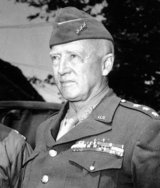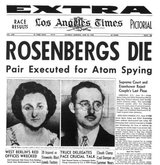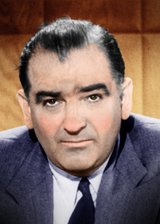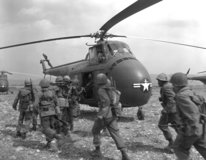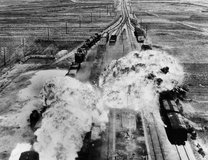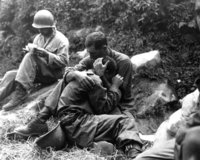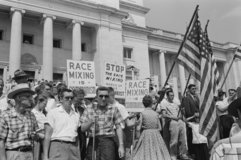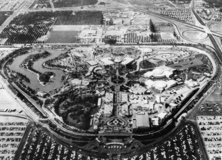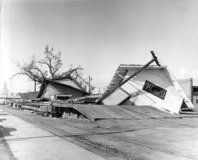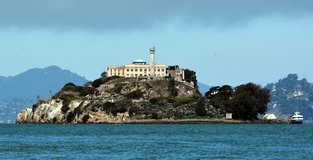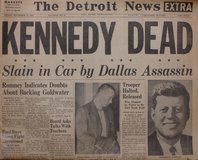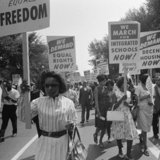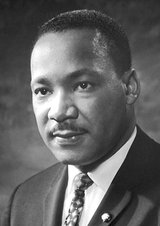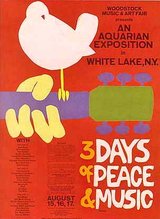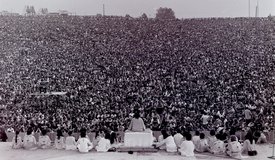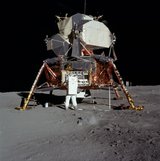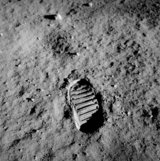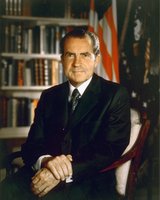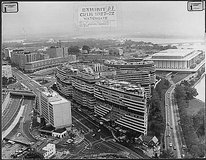©2025 HistoryLines, 2270 US Highway 30, Oswego, IL 60543.
Lyle Lawrence Carringer
-
Childbirth
-
Childhood
-
Clothing
-
Commerce
-
Communication
-
Diet
-
Education
-
Entertainment
-
Holidays
-
Household
-
Hygiene
-
Jim Crow Laws
-
Marriage
-
Medicine
-
Military
-
Politics
-
Religion
-
Transportation
-
Lyle is born in San Diego, San Diego, California, United States
-
The first game of professional football is played
-
Plessy v. Ferguson case legalizes separate facilities for blacks and whites across the U.S.
-
The first intercollegiate basketball game is played between the Cal and Stanford women's teams
-
Guglielmo Marconi invents radio
-
The United States declares war with Spain in the Caribbean
-
Lyle's future wife, Emily Kemp Auble, is born 7 years after Lyle.
-
The Wright brothers fly the first heavier-than-air aircraft
-
The Pacific Coast League founded
-
The new Ford Motor Company makes the first widely affordable car
-
San Francisco native Jack London publishes his most famous novel
-
The first radio broadcast is sent from Massachusetts
-
An 8.0 earthquake hits San Francisco
-
The RMS Titanic sinks after hitting an iceberg in the north Atlantic Ocean
-
America's first transcontinental highway is built
-
The Great War in Europe eventually pulls in American involvement
-
President Wilson creates a new agency to protect America's parks
-
Lyle Joins the U.S. Marines
-
Virus spreads around the world
-
Camp Lewis faces Mare Island in 1918 Rose Bowl
-
On 19 June 1918, Lyle marries Emily Kemp Auble.
-
On 31 July 1919, Lyle's daughter, Betty, is born when Lyle is 27 years old.
-
The 18th Amendment prohibits alcohol production in the United States
-
Women in the U.S. are granted the right to vote with the 19th Amendment.
-
Listeners tune in to public radio
-
The Rose Bowl Stadium is completed, becoming one of the largest and most famous venues in sports
-
The Hollywood sign becomes an iconic American symbol
-
John T. Scopes is accused of teaching evolution in a public school
-
Alexander Fleming discovers penicillin and revolutionizes the medical world
-
Herbert Hoover is inaugurated as the 31st President
-
The Great Depression strikes California, leading to the worst economic crisis in the state's history
-
The Empire State Building is constructed in New York City.
-
President Roosevelt passes New Deal programs to help revitalize the economy
-
Farmers abandon their lands after the Dust Bowl destroys crops and enhances economic strain caused by the Great Depression
-
Amelia Earhart disappears over the Pacific Ocean.
-
John Steinbeck's most famous book is published, selling over 430,000 copies within the first year
-
Impact of World War II reaches the West Coast
-
Over 11 million people are killed by the Nazis in organized genocide
-
Japanese planes attack Pearl Harbor naval base in Hawaii, killing 2,400 Americans
-
Mother dies
-
The U.S. drops the first atomic bombs on Hiroshima and Nagasaki.
-
A Californian, one of America's greatest generals dies after a car crash
-
Father dies
-
U.S. Senator Joseph McCarthy heads an aggressive campaign against American citizens with supposed Communist sympathies
-
America deploys troops to South Korea to stop the halt of the North Korean army
-
Polio Vaccine is presented to the public
-
Brown v. Board of Education desegregated all public schools in America.
-
Disneyland opens to the public in Anaheim, CA
-
California becomes a center for soldiers and refugees during the Vietnam War
-
The Soviet Union attempts to transfer nuclear weapons to Cuba
-
Winds ravage Puget Sound
-
The famous Alcatraz Prison closes due to high operating costs
-
President John F. Kennedy is assassinated in Dallas.
-
The Civil Rights Act outlaws racial discrimination of African-American people in employment and education
-
The Black Panther Party becomes a Marxist revolutionary group, bringing an interior threat to America's government
-
Civil rights leader Martin Luther King Jr. assassinated in Memphis
-
Thousands traveled to upstate New York for the Woodstock Music and Art Festival.
-
American astronaut Neil Armstrong becomes first man to walk on the moon
-
Over 175,000 acres and 382 homes are burned in San Diego County in what would be the biggest wildfire of its time
-
McDonald's Egg McMuffin becomes a popular breakfast item for people across the globe
-
Watergate Scandal
-
Lyle dies
Beginning in the late 1840s, many single men came to California in hopes of striking it rich with gold, keeping the percentage of children in the region relatively low. As more families made the trek west, however, the growth of new communities brought with it the rapid construction of schoolhouses up and down the coast. Children, especially the eldest, were still expected to take on great responsibility within the home. As the 19th century drew to a close, however, there was also a greater emphasis on attending school and developing a wider spectrum of knowledge and skills, specifically for wealthier white males.
When not in school, and not working in the factories or at home, children would often entertain themselves. Baseball was a popular pastime for boys starting in the mid 1800s, as were sprint races and wrestling. Games such as table-top ninepins were also favored among boys and girls, alike; as well as Fox and Geese, a board-and-peg game where players attempt to capture and block one another's pieces; and Gracies, a two-player stick-and-hoop game.
Even after his initial successes, Marconi continued to study and develop his science, assisting in the creation of the British Broadcasting Company (BBC) and the development of radar technology. But Marconi would remain most well-known for inventing the radio, bringing increased enjoyment, safety, and information to Lyle's neighbors and relatives. Many members of Lyle's community soon could not imagine their lives without the existence of radio.
More than fifty years after its founding, the league would go into decline as the first Major League Baseball teams arrived on the West Coast. It would survive into the 21st century as a minor league, continuing to thrill sports fans as it had since Lyle's day.
During World War I, surgeons began to use highly-absorbent cellucotton in place of surgical cotton when treating battle wounds. After the war, cellucotton was repurposed and rebranded as Kotex sanitary napkins, helping to improve feminine hygiene during menstruation. Additionally, as dress hems and sleeves became shorter, the women in Lyle's family were advised to shave their legs and underarms as a necessary part of personal hygiene.
The average married couple had three to four children. Domesticity was the order of the day, which meant the father went out to work while the mother stayed at home to care for the children and the household. However, with global events such as two world wars and the Great Depression, some began to postpone marriage and having children due to economic restraints. Some couples shared rooms and homes in order to split the rent and save a little bit of money. Many women and children were also compelled to go to work so they could help their husbands and fathers provide for the family. Divorce was unusual in the early part of the century, but as cultural mores changed, legal separation became more common in Lyle's community as he got older.
Soldiers from Lyle's state preparing for deployment could be sent to California's Camp Fremont, which prepared soldiers for WWI, and its WWII successor at Camp Roberts. A soldier's training now included the use of motor vehicles, tanks, and machine guns and defense against chemical weapons. On the battlefield, these men wore cotton or wool olive "drab" underclothing, thick socks, shirts, trousers that ended at the calf, leggings, and hobnail shoes. They were also issued hats for different occasions: a pinched, round, brown campaign hat; an overseas cap; and a battle helmet. In addition to wristwatches, compasses, and handkerchiefs, soldiers carried dog tags and gas masks for the first time.
As male workers left for the front, women in Lyle's community took over their factory jobs, producing or repairing many essential items from airplanes to bombs. In 1943, the Women’s Army Corps (WAC) was created, followed by the U.S. Navy Women’s Reserve (WAVES), U.S. Coast Guard Women’s Reserve (SPARS), Marine Corps Women’s Reserve, and Women Airforce Service Pilots (WASPS). Families on the home front rationed goods such as gas, food, and clothing to save supplies for soldiers. Advertisements encouraging Lyle's neighbors to make such sacrifices flooded newspapers, magazines, and the radio. Propaganda films spread patriotism and called for even more recruits.
During peacetime, many veterans still suffered with both the physical and emotional scars of combat. Proper care wasn't always available to these vets, despite the many thousands dealing with "shellshock," a condition later renamed Post-Traumatic Stress Disorder (PTSD). Lyle's community would struggle for years to help soldiers return to civilian life as the nation celebrated their accomplishments and mourned the troops it had lost.
Once American soldiers finally did enter the fray in 1917, patriotism and anti-German sentiments ruled the day. In Lyle's state of California, men between the ages of 21 and 31 rallied and either volunteered or registered for the draft, departing for training in either San Diego or Washington, leaving their loved ones behind. With the men fighting in Europe, American women and minority citizens took over critical factory jobs to keep the country running and the war effort well supplied. More than 110,000 American lives were lost in World War I, and many of Lyle's fellow Californians were among them.
Other popular holidays included Independence Day, Easter, Halloween, and Thanksgiving. For most Californians, the biggest holiday of the year was Christmas. Unlike the Eastern states, which encountered freezing weather and harsh snowstorms, winters in California were often mild and pleasant. Even so, families enjoyed staying in and decorating Christmas trees, singing carols, and of course, giving gifts.
Although the majority of Californians celebrated Christian religious holidays in one form or another, the region was also home to growing numbers of Jews, Muslims, Buddhists, and other faiths. Every spring, Jewish communities celebrated Passover, which commemorated the story of the Exodus in the Bible, through readings from the Torah and a meal. Muslims celebrated the prophet Muhammad's initial revelations of the Quran through Ramadan, a one-month long celebration usually in late spring, that used daytime fasts to promote self-reflection and practice restraint.
Sporting events were always big draws in the United States during Lyle's life, particularly baseball and football. For decades, California was home to many baseball teams in the popular Pacific Coast League, but by the 1950s, the Major League's Dodgers and Giants had made waves by relocating to L.A. and San Francisco, as well. Pro football, meanwhile, was largely trumped by the college ranks, as schools like USC and the University of California-Berkeley drew huge crowds to their Saturday contests. By the 1920s, many families could enjoy those games—and many other forms of entertainment— in their own living rooms, as radio broadcasts delivered news programs, live theater productions, music, and comedy to millions of listeners.
On New Year's Day, 1918, a crowd of 42,000 gathered in Pasadena, CA, to watch the two teams go head-to-head. A field goal in the second quarter put the Marines on the board, but a touchdown by Dick Romney gave Camp Lewis seven points. The Marines stayed strong, scoring another field goal and a touchdown in the fourth quarter. The final score stood at 19 to 7, and the Mare Island Marines were declared the victors. World War I would continue for several more months, but Lyle's community could always look back to the joy of the game to escape the uncertainty of wartime life.
Mass production also allowed for a variety of styles. Beds began to change to standardized sizes, including the twin, queen, and king size beds still produced today. In some families, this meant everyone had their own bed for the first time, even children. Coal burning stoves were prevalent in California, but central heating furnaces were gaining in popularity. Now people in Lyle's community did not have to spend the winter in the front room huddled by the stove or the fireplace.
The advent of air conditioning also provided respite from the California heat, at least for those who could afford the expensive units of the time. Houses were generally more spacious than before, with separate rooms for the kitchen, bathrooms, bedrooms, and living space.
Indoor plumbing was a welcome addition to the household during the period, although some rural homes still had outhouses. Carpets, whether woven at home or shipped from far away lands, were a popular form of decor, with the added bonus of keeping the home warm in winter and protecting bare feet on chilly spring mornings. Homes wired with electricity were increasingly introduced in the '20s and '30s, illuminating city apartment complexes and small town farmhouses alike.
In 1920, the Pittsburgh company Westinghouse (one of the largest radio manufacturers in the nation) devised a plan to sell more radios. They decided to make a broadcasting transmitter that would allow radio owners throughout the region to tune in for different programs. To make this dream a reality, they hired Dr. Frank Conrad — a local ham radio operator who often played records over the air for his friends and listeners — to set up a broadcasting channel, KDKA. November 2, 1920, the day of the presidential election, was to be the first day of programing.
Listeners in the area who tuned in that day heard a reading of the results of the presidential election, where Harding decisively defeated Cox. The broadcast, although heard by only a small group of people, was a stunning success and caused radio mania to grip the nation. Radio sales soon exploded throughout America, and there was a rush to open up and register commercial radio stations in most major cities. The Age of Radio had truly begun.
Meanwhile, the annual New Year's Day football game played here, the Rose Bowl Game, became a bigger and grander spectacle. The profits derived from visitors and spectators would lead to a number of renovations, and the Rose Bowl stadium eventually would house more than 92,000 fans, becoming one of the largest and most famous sports venues in America.
Although industrialization was rapidly progressing throughout the state, agriculture and farming still played a central role in California's economy. In fact, the increased production of crops such as wheat, cotton, potatoes, and oranges eventually made California the nation's leading agricultural state. The rising prominence of Hollywood also helped its economy, as the film and fashion industries became new symbols of American prosperity. When thousands of workers traveled west to find work during the Great Depression, California's reputation to the rest of America was clearer than ever — a place of hope and financial opportunity.
With this economic power came a greater reliance on financial institutions like the Bank of America and Security Pacific. Coins and paper money were still commonly used, but personal checks were also more widely accepted than in the past. Like most Californians, Lyle paid sales taxes on many goods, as well as federal income taxes. During the war, some Californians purchased war bonds to support the war effort financially.
After the bombing of Pearl Harbor, some people in Lyle's community feared that the Japanese would invade the American mainland next. Some also worried that the substantial Japanese-American population in California was providing secret intelligence to Japan. Due to this paranoia and increasing security concerns, the U.S. government forced more than 110,000 Japanese-Americans to leave their jobs and homes to enter internment camps, which were very uncomfortable and surrounded by armed guards and barbed wire. While many Americans supported this policy, history would prove it to be a very dark chapter in the country's history.
At the same time, California became a prime training ground for enlisted soldiers during the war, as more than 140 war bases were built. Shipyards were also built along the California coast, providing many of America's ships and planes for the war effort.
With many men fighting overseas, women, African-Americans, and new immigrants joined the workforce in greater numbers, granting them unprecedented opportunity to earn good money while becoming an essential part of the war effort. Rationing and scrap drives were also promoted by celebrities and encouraged as a way for anyone of the homefront to be patriotic and help the boys overseas.
During the war, few Americans were aware of the atrocities of the Holocaust occurring in Europe, as the full scope of the Nazi extermination of Jews and other minorities in concentration camps only became clear in the years that followed. Countless immigrant families in the U.S. would be directly affected by it, however.
In the end, the Allied Forces were triumphant in the war, as Germany's surrender (following the suicide of Adolf Hitler) was eventually followed by the surrender of Japan. There was great rejoicing across the country and much of the world as peace was finally achieved. The price had been extremely high, however. Japan's surrender had come only after President Harry Truman's decision to use the atomic bomb for the first time, killing thousands of civilians in the cities of Hiroshima and Nagasaki. The controversy and pain from these and hundreds of other attacks and battles from the six-year war would create deep scars—literal and figurative—that would stay with many members of Lyle's generation.
Almost immediately after the bombs were dropped, 53 year-old Lyle and millions of other Americans huddled around their radios to hear the details. Though some questioned whether the ends justified the means, many of the people in Lyle's life were simply relieved to know that a victory and peace were finally in sight.
The storm began as Tropical Storm Freda, before weakening as it moved into the North Pacific. It hit the Aleutian Islands, where it veered south and picked up strength once again. It first struck San Francisco, where it caused Game 6 of the World Series to be postponed, killed 17 people, and then made its way north.
Winds registering at 140 mph buffeted central Oregon. Portland was hit with 120 mph gusts, uprooting trees and taking down power lines. Many office workers were trapped in the city as the storm made it impossible to drive home. Roofs were ripped from homes and windows shattered, creating more flying debris.
In Washington, power was knocked out in all of Tacoma; in Seattle, the World's Fair grounds were closed. One seven-year-old boy, Charles Brammer of Spanaway, received the fright of his life when he and his mother saw what they thought was a dog running in circles in a nearby field. As the creature approached they realized it was an escaped lion. It attacked the boy, and his mother charged at it and began beating it with her shoe, driving the creature off and letting her son to escape.
In the end, Lyle's friends and neighbors heard reports of the final destruction: fifty people were killed, 150 families lost their homes, and over $150 million in damage was done.
Lyle was 76 at the time of King's death, and shock spread throughout his community and the entire country. Millions mourned the loss of the Civil Rights leader and worried about what his death would mean for the future of the movement. Ultimately, King's empowering speeches, encouragement of non-violent protests, and dream of racial equality would influence Americans for generations to come.
Lasting three days, the peaceful but drug-filled and disorganized event came to represent much of what people both appreciated and disliked about the hippies. It also may have helped introduce Lyle and others to some of the era's most influential songwriters and musicians.


